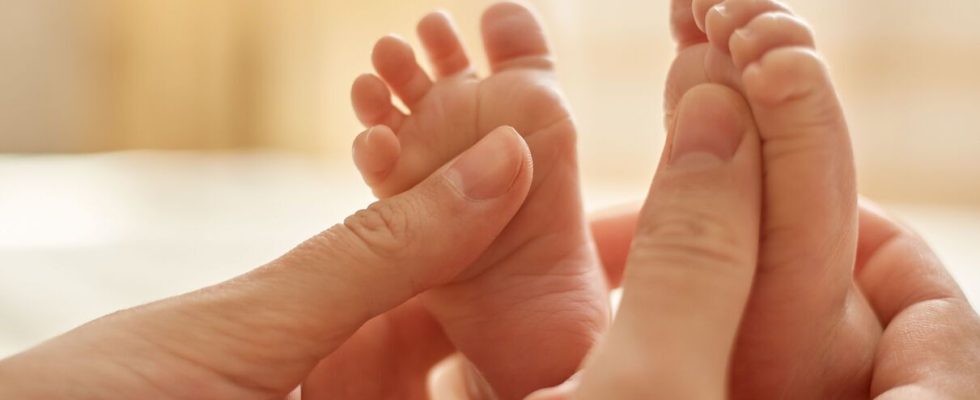Marked by joint retractions, congenital arthrogryposis is often discovered in the second trimester of pregnancy.
I’congenital arthrogryposis (AMC) is a rare condition that affect between one in 3,000 and one in 12,000 babies at birth. It is characterized by “neuro-motor deficiencies and by joint deformities and stiffness noted at birth”, underline Alliance Arthrogryposis website. It is not a progressive condition, but if caused by an underlying pathology, CMA may progress over time.
There are two main types of congenital arthrogryposis multiplex, summarizes the MSD manual :
- amyoplasia (classic arthrogryposis): multiple retractions affect the limbs symmetrically. Affected muscles are hypoplastic and exhibit fibrous degeneration and steatosis.
- Distal arthrogryposis : Hands and feet are affected but large joints are usually spared. Distal arthrogryposis is a heterogeneous group of diseases, many of which are associated with a specific gene abnormality in one of a number of genes that code for components of the contractile apparatus.
Where does arthrogryposis come from?
According to the HAS, congenital arthrogryposis (AMC) is characterized by two articular limitations at birth, generally symmetrical. But CMA is actually “a symptom common to a group of heterogeneous congenital conditions”: it can be linked in particular to damage to the central nervous system, the peripheral nervous system, but also respiratory, gastrointestinal, genito-urinary. But it can also be an isolated symptom. In all cases, whatever their cause, CMA stems from a mobility problem in the fetus.
Because as the HAS reminds us, from the embryonic stage, movement is observed, more precisely from the 7th week of amenorrhea. We first have movements of flexion and extension of the trunk and the head. Then, around the 10th week, there is an opening of the jaw, movements of the upper and lower limbs. And these movements are not there without reason: they are crucial to the constitution of the joints at the level of the limbs and the spine. “The establishment of musculoskeletal structures in humans therefore coincides with the appearance of movement”, specifies the HAS.
But sometimes these movements do not take place as they should (for various reasons), and this can lead to a lack of joint formation : this is where these symptoms of rigid and deformed joints come from, grouped under the name of AMC.
Among the causes of this loss of fetal mobility, the HAS notes various possibilities, such as an infection with Zika virusor other viruses (varicella-zoster, rubella), bacterial infectionssevere oligohydramnios (less amniotic fluid than what is needed) and early due to a rupture of the uterine membrane, sporadic vascular accidents, or even genetic abnormalities.
What are the symptoms of arthrogryposis and how is it detected?
Arthrogryposis is recognized from birth because of the deformities that affect the joints. The assessment is first clinical, then it is a question of finding the cause of this AMC, via genetic examinations for example.
The joints are “fixed” in one position, which can be in flexion or in extension. The wrists and fingers can be flexed, the knees extended, the feet are in equine varus… “Physical disabilities can be severe. Some children may have primary central nervous intelligence is usually intact“, notes the MSD manual.
Can arthrogryposis congenita be treated?
“The care is medico-surgical and multidisciplinary. It begins at birth and continues throughout life. It adapts to age and difficulties, requiring the intervention of many therapists”, notes the High Authority of Health. But according to the Arthrogryposis Alliance, part of the impairments could be recovered by rehabilitation at an early stagebut also via surgery.
The MSD manual also explains that the treatment of arthrogryposis happens in two stages: joint mobilization and joint plastering, and potentially surgical procedures. “Muscle transfer (eg, transfer of the triceps to make it an elbow flexor) can improve function,” he cites as an example.
Sources: HAS, Arthrogryposis Alliance, MSD Manual
